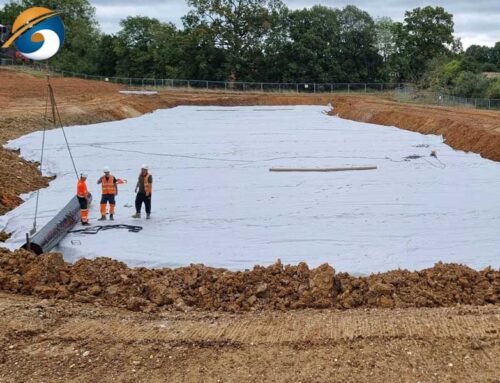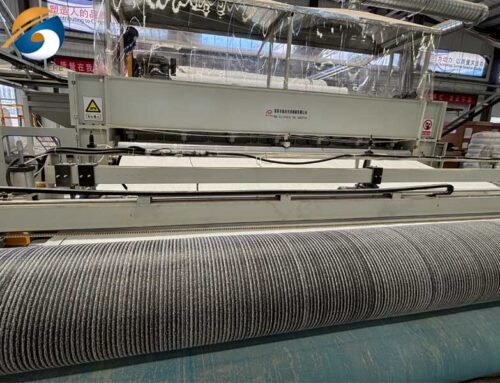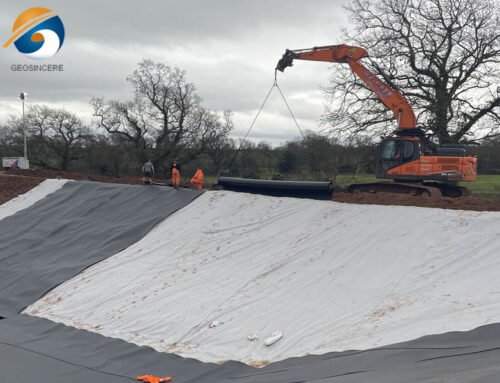When it comes to enhancing the stability and durability of road construction projects, choosing the right Geogrid for Road Construction is critical. Geogrids play a vital role in reinforcing soil, reducing rutting, and extending the lifespan of paved and unpaved roads. As a trusted manufacturer in the geosynthetics industry, GEOSINCERE offers high-performance geogrid solutions designed to meet the demanding requirements of modern infrastructure. Whether you’re working on highways, rural roads, or heavy-duty pavements, selecting the appropriate geogrid can significantly improve load distribution and prevent structural failures. In this guide, we’ll explore the key factors to consider when selecting a geogrid and how GEOSINCERE’s innovative products can deliver superior performance for your road construction needs.
1. Introduction: Geogrid for Road Construction Projects
With the continuous growth of global infrastructure investment, road construction is advancing rapidly around the world. However, in many regions with complex geological conditions or soft foundations, traditional roadbeds often suffer from settlement, differential sinking, or cracking, which severely impacts the durability and lifespan of the road.
Geogrid, as a high-strength synthetic reinforcement material, is widely used in highway engineering, especially playing an important role in strengthening soft foundation, dispersing load and extending the life of pavement.
For international buyers, selecting the right geogrid requires more than just looking at price—it demands an understanding of the project’s geological conditions, traffic loads, and design life. This article offers a comprehensive explanation from the perspective of material, structure, performance, and applications to help you make the right decision.
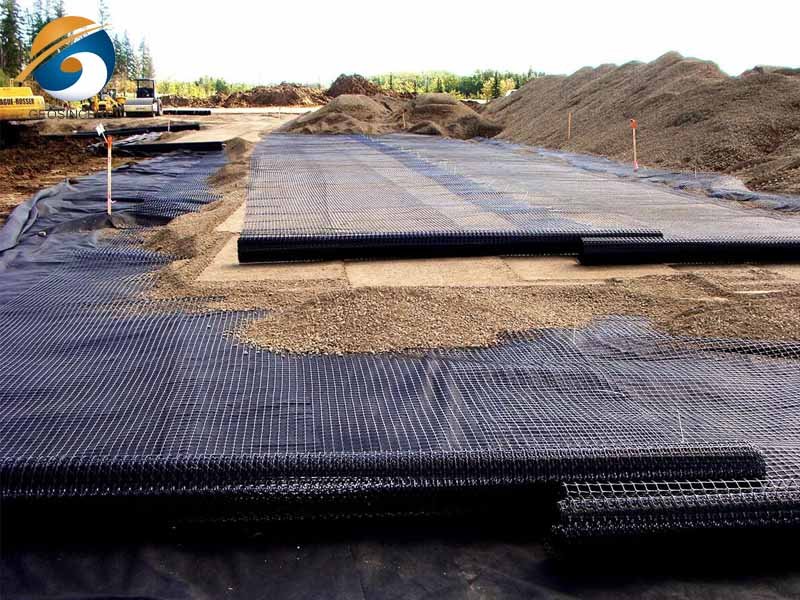
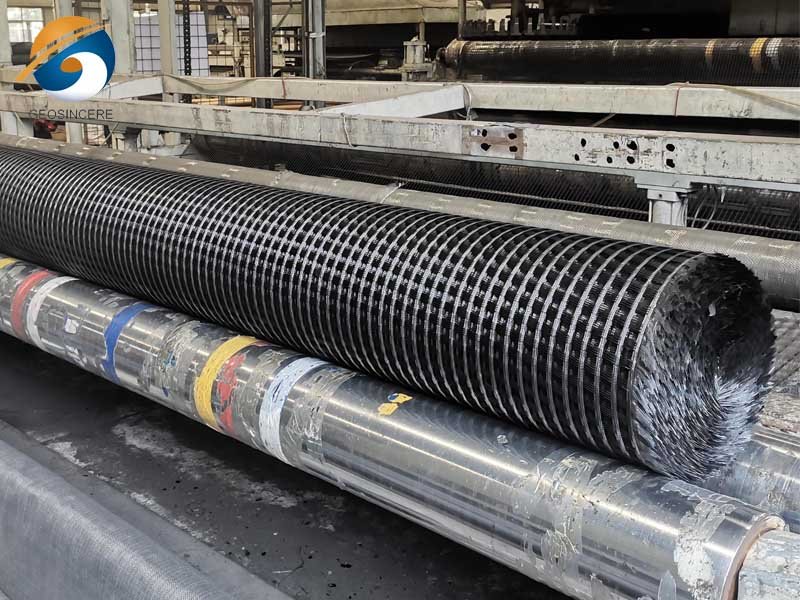
2. Key Functions of Geogrid for Road Construction Projects
2.1 Geogrid for Road Construction – Strengthen Subgrade Stability
Geogrids actively reinforce soft soil layers by interlocking with aggregate to distribute loads more evenly. Additionally, their tensile strength counters swelling pressures in expansive soils, preventing differential settlement. Ultimately, this stabilization significantly improves subgrade performance for roads and foundations in challenging ground conditions.
2.2 Geogrid for Road Construction – Prevent Uneven Settlement and Lateral Deformation
Geogrids actively transfer structural loads across wider areas to minimize concentrated stresses. Additionally, their reinforcement mechanism effectively prevents differential settlement in underlying soils. Consequently, this load distribution significantly reduces pavement edge cracking and extends infrastructure lifespan.
2.3 Geogrid for Road Construction – Extend Road Lifespan and Reduce Maintenance
Geogrids actively minimize stress concentrations within asphalt layers to delay fatigue cracking. Additionally, their reinforcement capability significantly prolongs pavement service life by preventing structural deterioration. Consequently, this reduces long-term maintenance frequency and slashes rehabilitation costs by up to 40%.
2.4 Geogrid for Road Construction – Lower Construction Costs
Geogrids actively optimize aggregate layer efficiency, enabling 20%-40% thickness reduction while maintaining structural integrity. Additionally, this engineered solution significantly cuts material consumption and minimizes excavation requirements. Consequently, projects achieve substantial cost savings on both construction materials and labor without compromising performance.
These benefits are widely proven and applied in various projects such as airport runways, highways, rural roads, port pavements, and mining transportation routes.
3. Common Types of Geogrid for Road Construction Projects
3.1 Geogrid for Road Construction – Uniaxial Plastic Geogrid
- Material: Polypropylene (PP) or High-Density Polyethylene (HDPE)
- Feature: Extremely high tensile strength in one direction
- Application: Retaining walls, steep slopes, unidirectional stress zones
3.2 Geogrid for Road Construction – Biaxial Plastic Geogrid
- Material: PP or HDPE
- Feature: Strength in both longitudinal and transverse directions
- Application: General roadbeds, mining roads, concrete base reinforcement
3.3 Geogrid for Road Construction – Polyester Warp-knitted Geogrid
- Material: High-strength polyester fibers with PVC or bitumen coating
- Feature: Flexible, corrosion-resistant, excellent long-term creep performance
- Application: Soft soil foundations, wetland roads, dam-top highways
3.4 Geogrid for Road Construction – Fiberglass Geogrid
- Material: Glass fiber + bitumen coating
- Feature: High temperature resistance, UV-resistant, stable performance
- Application: Asphalt overlays, anti-reflective cracking systems
3.5 Geogrid for Road Construction – Steel-Plastic Composite Geogrid
- Material: High-strength steel wire wrapped in polyethylene
- Feature: Exceptional load-bearing capacity
- Application: Port roads, heavy-duty truck lanes, mining roads
4. Five Key Parameters – Geogrid for Road Construction
4.1 Geogrid for Road Construction – Tensile Strength
- Recommended ≥ 30kN/m for regular roads
- For heavy-duty roads and runways: ≥ 50kN/m
4.2 Geogrid for Road Construction – Elongation
- Lower elongation = better resistance to deformation
- Polyester geogrids with <10% elongation are ideal for high rigidity needs
4.3 Geogrid for Road Construction – Creep Resistance
- Affects long-term bearing capacity
- Polyester and steel-plastic geogrids perform better than standard PP geogrids
4.4 Geogrid for Road Construction – Chemical Durability
- Roads are exposed to water, salt, acid, and alkali
- Choose geogrids with PVC or bitumen coating for long-term durability
4.5 Geogrid for Road Construction – Ease of Installation
- Polyester geogrids: flexible and easy to install
- Plastic geogrids: rigid, suitable for mechanical installation
- Selecting proper roll width (2m, 3.95m, 5.8m) can reduce overlaps and labor cost
5. Product Recommendations by Road Type
| Road Type | Recommended Geogrid Type | Suggested Strength |
| Highway Main Line | Biaxial PP / Steel-Plastic | ≥ 40kN/m |
| Urban Expressway | Polyester + PVC Coating | ≥ 30kN/m |
| Temporary Mountain Roads | Biaxial PP Geogrid | ≥ 20kN/m |
| Asphalt Crack Prevention | Fiberglass + Bitumen | ≥ 50kN/m |
| Soft Soil Subgrade Roads | Polyester or Steel-Plastic | ≥ 35kN/m |
| Mining Heavy Load Lanes | Steel-Plastic Geogrid | ≥ 60kN/m |
6. FAQs from International Buyers
- Can geogrids be used in high-temperature regions?
Yes. Fiberglass or steel-plastic geogrids are highly heat-resistant and suitable for hot climates like the Middle East and Africa. - How are geogrids joined or fixed?
Commonly by U-shaped pins or welding joints. They can also be combined with non-woven fabric and gravel for enhanced performance. - Do you offer test reports or certifications?
We provide standard test reports conforming to ASTM, DIN, ISO—ideal for bidding and official project approval. - What width and roll length should I choose?
Choose roll widths based on site machinery and transport plans. Regular widths: 3.95m / 5.8m / 6m to reduce seams and improve efficiency.
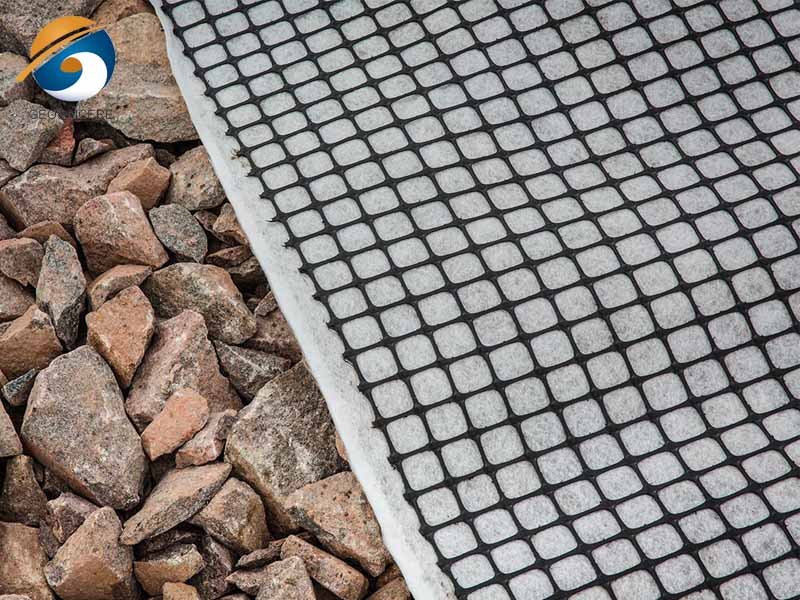

7. Why Choose Us? — Custom Services for Global Clients
7.1 Export Experience
Our solutions actively serve infrastructure developers across Asia’s rapidly urbanizing markets. Additionally, Middle Eastern clients leverage our products for extreme climate resilience in mega-projects. Moreover, African and Latin American partners utilize our technologies to overcome challenging soil conditions cost-effectively.
7.2 Fast Delivery
Our factories actively produce 2-3 high-capacity 40ft HQ containers daily to meet global demand. Additionally, we guarantee streamlined logistics with container dispatch completed within 15 days of order confirmation. Moreover, this efficient throughput ensures reliable supply chains for time-sensitive projects worldwide.
7.3 Technical Support
We actively provide detailed engineering drawings to ensure precise project planning and material specifications. Additionally, comprehensive technical data sheets are readily available, offering performance metrics and compliance certifications. Moreover, step-by-step installation guidance accompanies all products to guarantee optimal field implementation and long-term performance.
7.4 Free Samples
We actively facilitate sample deliveries to support critical lab tests for material validation. Additionally, project-specific mockups are provided to verify real-world performance before full-scale deployment. Moreover, this hands-on evaluation ensures technical compatibility and quality assurance for client specifications.
7.5 Multilingual Team
Our team actively provides technical support and documentation in English for global projects. Additionally, we deliver seamless Spanish-language communication for Latin American and European partners. Moreover, French-speaking clients receive tailored assistance through bilingual specialists and translated materials.
8. Conclusion: The Right Geogrid Builds Stronger Roads
While geogrids actively reinforce roads beneath the surface, their proper selection directly determines a project’s safety, longevity, and budget efficiency. At GEOSINCERE, we not only manufacture premium geogrids but also proactively develop integrated solutions tailored to your terrain challenges and load requirements.
Whether you’re a contractor optimizing costs, a distributor expanding inventory, or an engineer designing critical infrastructure, we actively support your needs. Request samples for testing, competitive quotations, or customized technical guidance—our team ensures responsive, solution-driven collaboration. Contact GEOSINCERE to transform your project’s foundation performance today.



